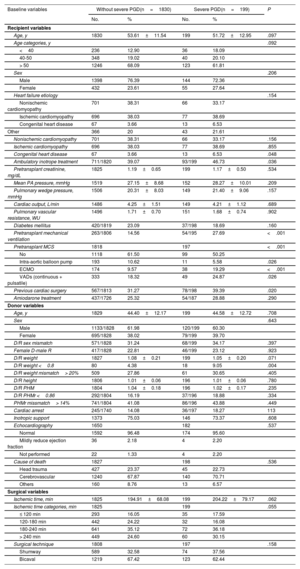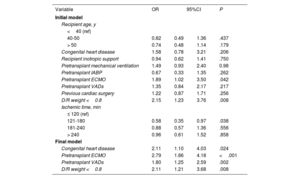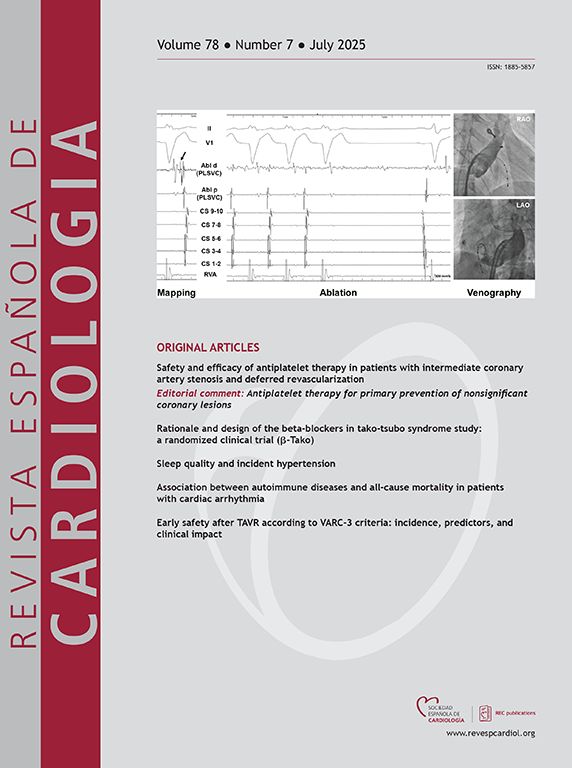
Severe primary graft dysfunction (PGD) is the leading cause of early mortality following heart transplant (HT). This study analyzed the temporal trends and mortality associated with severe PGD, identified risk factors, and developed a predictive model based on a contemporary cohort.
MethodsA total of 2029 HT performed between 2010 and 2020 in 14 Spanish centers were retrospectively analyzed. Patients with and without severe PGD were compared. Logistic regression was used to identify predictors of severe PGD and to generate a risk score. Model performance was assessed in terms of calibration and discrimination.
ResultsThe incidence of severe PGD was 10%, with an increase observed over the last 5 years (8% vs 11%). However, 30-day and 1-year mortality declined significantly (59.1% vs 38.8% and 69.7% vs 58.8%, respectively). Independent predictors of severe PGD included extracorporeal membrane oxygenation (OR, 2.79), pretransplant ventricular assist devices (OR, 2.11), donor-to-recipient weight ratio <0.8 (OR, 2.11), and congenital heart disease (OR, 2.11). A risk score was created, showing good calibration but limited discriminative ability.
ConclusionsDespite a rising incidence of severe PGD, mortality showed a marked decrease. Predictors of severe PGD included congenital heart disease, a donor-to-recipient weight ratio <0.8, and the use of extracorporeal membrane oxygenation or pretransplant ventricular assist devices. The predictive model showed good calibration but only moderate discriminative performance.
Keywords
Identify yourself
Not yet a subscriber to the journal?
Purchase access to the article
By purchasing the article, the PDF of the same can be downloaded
Price: 19,34 €
Phone for incidents
Monday to Friday from 9am to 6pm (GMT+1) except for the months of July and August, which will be from 9am to 3pm







